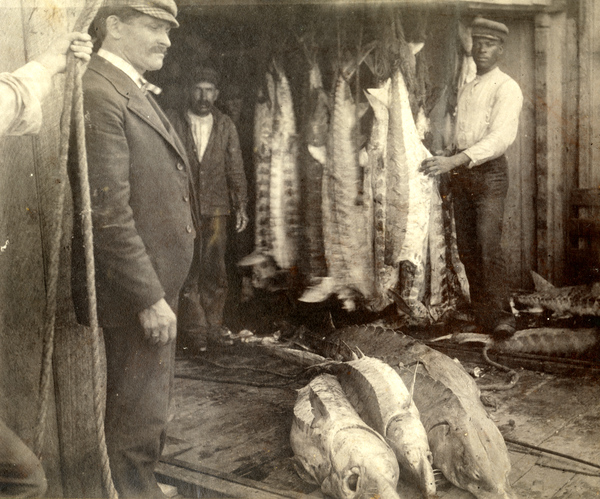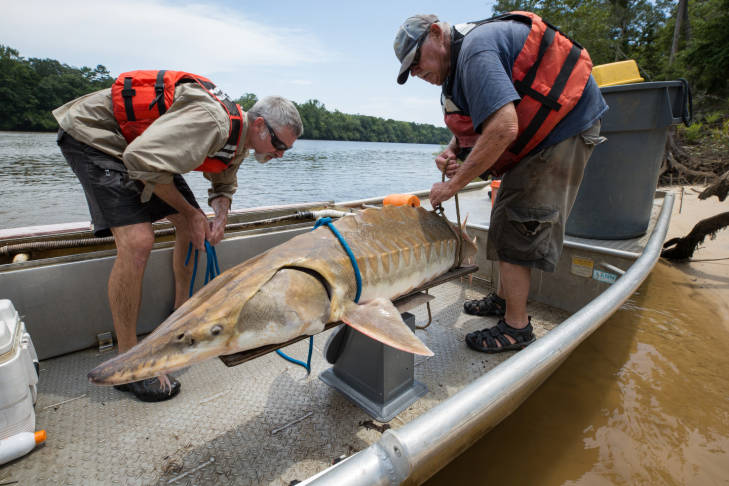
By Doug Alderson, Outreach and Advocacy Director
If you ever thought you saw a monster in the Apalachicola River, it could have been a Gulf Sturgeon. Armored with heavy plates, these “living dinosaurs” have been evolving for 200 million years and they can grow up to nine feet long and weigh 300 pounds. They live to be 60 years old, although the average life span is 20 to 25 years. Among their many unique qualities is an ability to jump up to six feet above the water, possibly to communicate and keep group cohesion and to refill their swim bladders to maintain neutral buoyancy. The Suwannee River has the largest population of Gulf Sturgeon and some boaters have been injured by jumping sturgeon.
The Apalachicola River is considered critical habitat for the federally threatened Gulf Sturgeon. A 2014 count estimated there were 780 juvenile sturgeon and 500 adult sturgeon in the Apalachicola, but biologists fear the adult sturgeon population might have suffered a decline due to Hurricane Michael.

Dams, pollution and harvesting for meat and caviar have greatly impacted sturgeon populations in the past, but they are making a slow comeback in many waters around the country due to protection measures. Catching or disturbing Gulf sturgeon is prohibited.
In early spring, sturgeon spawn around the Apalachicola’s limestone shoals area just below the Jim Woodruff Dam. Hatchlings spend 6-10 months feeding in the river as they make their way downstream. Juveniles under six years of age are believed to overwinter in the estuaries. Sturgeon eggs and young sturgeon are often preyed upon by suckers, sunfish, bass and catfish while alligators and sharks are the primarily predators of adult sturgeon. Sturgeon are bottom feeders.
If you are fortunate, you will be able to catch of glimpse of a large Gulf sturgeon while boating or paddling the Apalachicola River, especially in early spring.
For more information, check out this fact sheet: https://www.fws.gov/panamacity/resources/SturgeonFactS08.pdf.

